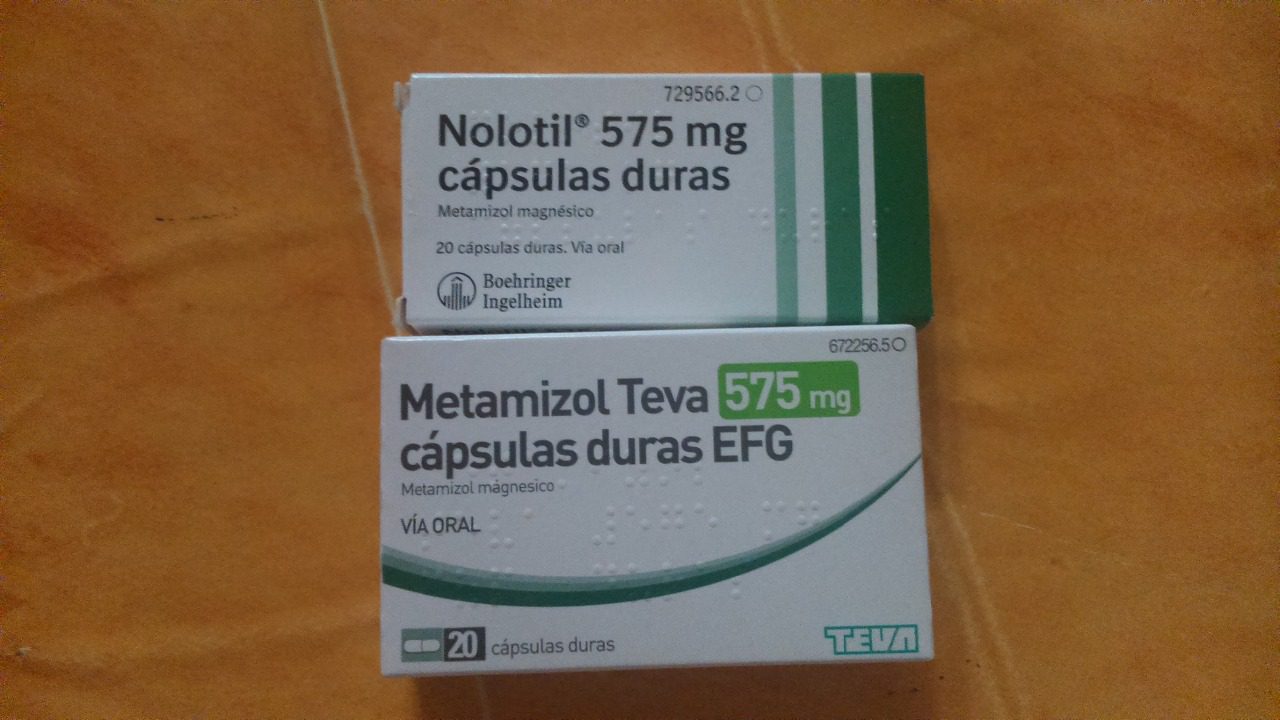Metamizol cinfa 575 mg
Metamizole dosage
The dose is established according to the intensity of the pain or fever and the sensitivity of each person to treatment with metamizole. It is very important to choose the lowest dose that controls pain and fever.
This medicine is for short-term use. If treatment is to be prolonged beyond one week, close monitoring for signs or symptoms of agranulocytosis should be carried out and blood counts, including blood differential, should be checked at the discretion of the physician (see section 4.4 and 4.8).
The dose should be reduced in the elderly, in debilitated patients and in those with decreased creatinine clearance, since the elimination of metamizole metabolites may be delayed.
Since in cases of renal or hepatic insufficiency the elimination rate decreases, the administration of repeated high doses should be avoided. A dose reduction is not necessary in short-term treatments. To date, there is insufficient experience with prolonged treatment with metamizole in patients with severe hepatic and renal insufficiency.
Metamizole covid
Stop using metamizole and contact a doctor if you develop symptoms of liver problems, such as discomfort (nausea or vomiting), fever, feeling tired, loss of appetite, dark urine, light-colored stools, yellowing of the skin or whites of the eyes, itching, rash, or upper gastrointestinal pain. Your doctor will check your liver function.
If co-administered with cyclosporine (a drug that prevents transplant rejection), it may reduce the blood levels of cyclosporine and therefore these should be measured regularly.
If co-administered with methotrexate or other drugs for the treatment of tumors (antineoplastics), it can potentiate the toxic effects in the blood of antineoplastics, especially in elderly patients.
If co-administered with acetylsalicylic acid, it may reduce the effect of acetylsalicylic acid in reducing platelet aggregation (antiplatelet) and should therefore be used with caution in patients who are taking it to protect the heart (cardioprotective).
Metamizol vademécum
Datos farmacocinéticosDisponibilidad100% (metabolitos activos)[5]Unión a proteínas48-58% (metabolitos activos)[5]MetabolismoHígado[5]Vida media de eliminación14 minutos (compuesto principal; parenteral);[4] metabolitos: 2-4 horas[5]ExcreciónUrina (96%, IV; 85%, oral), heces (4%, IV)[4]Identificadores
Aunque en algunos países es de venta libre, en otros está prohibido por su potencial de efectos adversos, como la agranulocitosis[6][7] Un estudio realizado por uno de los fabricantes del fármaco determinó que el riesgo de agranulocitosis en la primera semana de tratamiento era de apenas 1,1 por millón, frente a 5,92 por millón del diclofenaco[8].
Se patentó en 1922[9] y se utilizó por primera vez en Alemania bajo la marca «Novalgin». Durante muchos años, estuvo disponible sin receta en la mayoría de los países, antes de su retirada debido a los graves efectos adversos[10]. El metamizol se comercializa con varios nombres comerciales[2][3].
Se desaconseja su uso durante el embarazo, aunque los estudios en animales son tranquilizadores, ya que muestran un riesgo mínimo de defectos de nacimiento. Se desaconseja su uso en ancianos y en personas con insuficiencia hepática o renal, pero si hay que tratar a estos grupos de personas, se suele aconsejar una dosis menor y precaución. Se desaconseja su uso durante la lactancia, ya que se excreta en la leche materna[4].
Metamizol magnésico para que sirve
Stammschulte T, Ludwig WD, Muhlbauer B, Bronder E, Gundert-Remy U. Metamizole (dipyrone)-associated agranulocytosis. An analysis of German spontaneous reports 1990-2012. Eur J Clin Pharmacol. 2015;71(9):1129-38.
Blaser LS, Tramonti A, Egger P, Haschke M, Krahenbuhl S, Ratz Bravo AE. Seguridad hematológica del metamizol: análisis retrospectivo de los informes de seguridad espontáneos de la OMS y de Suiza. Eur J Clin Pharmacol. 2015;71(2):209-17.
Wertli MM, Reich O, Signorell A, Burgstaller JM, Steurer J, Held U. Cambios en el tiempo en las prácticas de prescripción de medicamentos para el dolor en Suiza entre 2006 y 2013: un análisis de las reclamaciones de seguros. BMC Health Serv Res. 2017;17(1):167.
Stamer UM, Gundert-Remy U, Biermann E, Erlenwein J, Meibetaner W, Wirz S, et al. [Dipirona (metamizol) : Consideraciones sobre la monitorización para la detección temprana de la agranulocitosis]. Schmerz. 2017;31(1):5-13.
Huber M, Andersohn F, Sarganas G, Bronder E, Klimpel A, Thomae M, et al. Agranulocitosis inducida por metamizol revisada: resultados del estudio prospectivo de vigilancia de control de casos de Berlín. Eur J Clin Pharmacol. 2015;71(2):219-27.
Relacionados

Bienvenid@ a mi blog, soy Octavio Pérez Alonso y te ofrezco noticias de actualidad.

Comments are closed